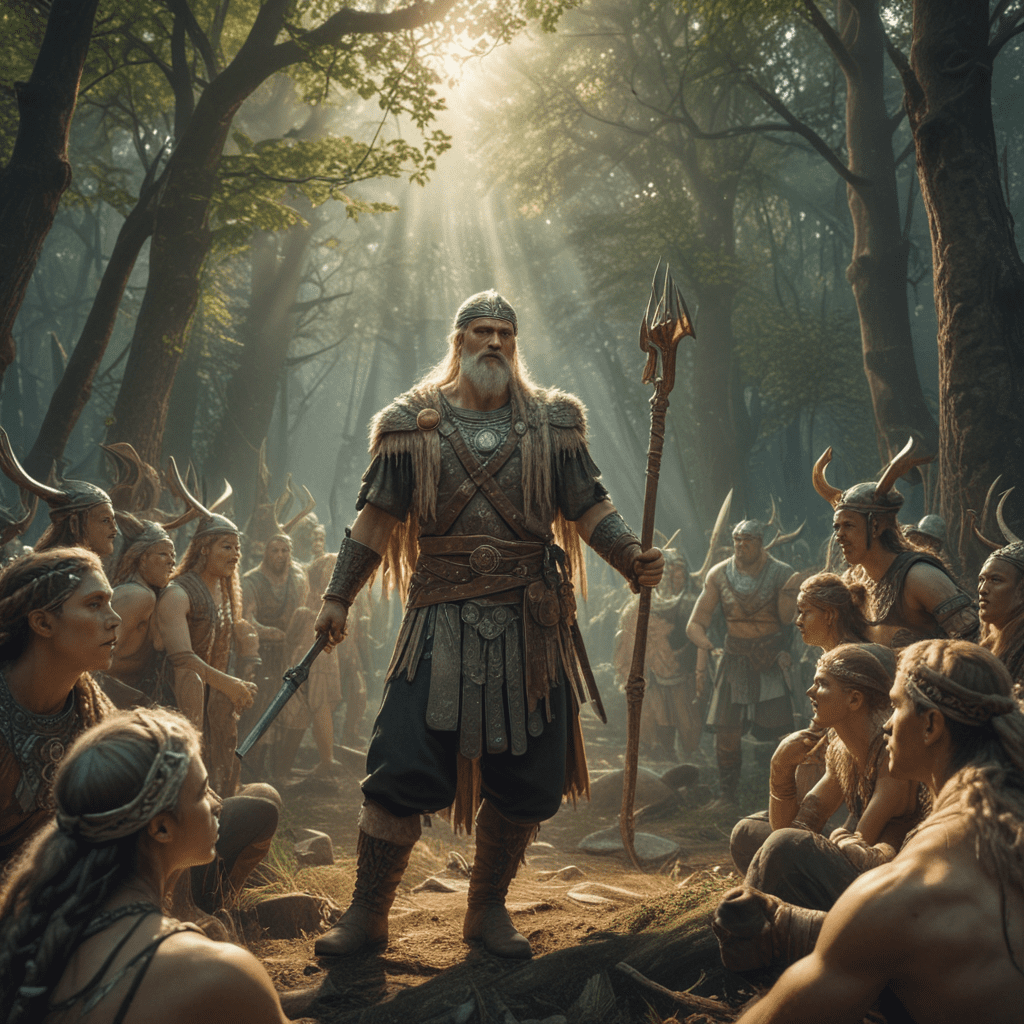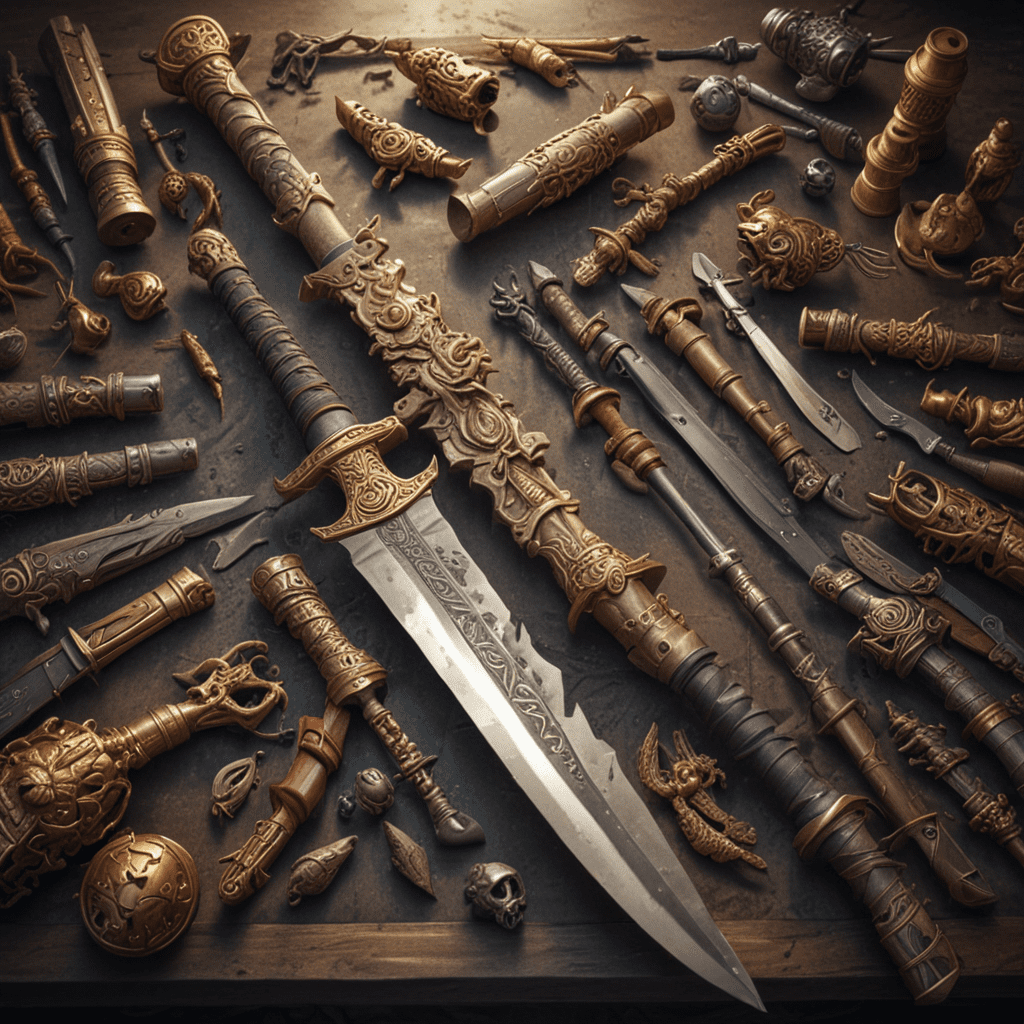Slavic Mythology: The Art of Storytelling
Slavic mythology is a captivating tapestry of folklore, myths, and legends woven by ancient Slavic peoples. It is a realm where gods and spirits intertwine with human affairs, where rituals and festivals celebrate the rhythm of life, and where storytelling unravels tales that shape Slavic identity.
The Origins of Slavic Mythology: Roots in Nature and Ancient Beliefs
Slavic mythology originated from the beliefs and observations of the natural world. The Slavs perceived nature as a sacred force imbued with spirits and deities. They revered the elements, the seasons, and the celestial bodies, believing these entities had a profound impact on their lives. These early animistic beliefs laid the foundation for the rich pantheon of Slavic gods that emerged over time.
The Pantheon of Slavic Gods: From the Thunderous Perun to the Trickster Veles
The Slavic pantheon is a vibrant assembly of gods and goddesses, each possessing unique attributes and responsibilities. Perun, the thunder god, wields the power of lightning and storms. Svarog, the celestial smith, is revered as the patron of fire and metalworking. Veles, the shape-shifting trickster god, is associated with wealth, cattle, and the underworld. Other notable deities include Dazhbog, the sun god; Lada, the goddess of love and beauty; and Morana, the goddess of winter and death.
The Role of Demons and Spirits in Slavic Mythology
Demons and spirits play a significant role in Slavic folklore, representing both malevolent and benevolent forces. Demons, known as demons or čerti, are often depicted as mischievous and harmful creatures that threaten humans. Spirits, on the other hand, encompass a wide range of entities, from spirits of nature to the souls of the dead. They can be both helpful and dangerous, depending on their nature and the circumstances of their interaction with humans.
The Significance of Rituals and Festivals in Preserving Slavic Heritage
Rituals and festivals have always played a vital role in Slavic culture. These traditions commemorate important events in the agricultural calendar, such as the solstices and equinoxes, and honor specific gods and spirits. Through these rituals, the Slavs connect with their ancestors and the divine, preserving their heritage and strengthening their sense of community.
The Art of Storytelling: Crafting Tales with Mythical Elements
Slavic mythology is not merely a collection of beliefs and deities; it is also a rich tapestry of vibrant stories and captivating tales. These stories, often passed down orally through generations, are a testament to the creativity and imagination of the Slavic people. They weave together elements of the divine, the natural, and the human, creating a unique and captivating narrative landscape.
Storytelling in Slavic mythology serves a vital function beyond entertainment. It is a way of preserving cultural values, passing down traditions, and strengthening community bonds. Through these tales, the Slavs explored their fears, celebrated their triumphs, and made sense of the enigmatic world around them.
The Impact of Storytelling on Slavic Culture: Identity, Values, and Traditions
The stories of Slavic mythology have profoundly shaped Slavic culture. They have instilled a deep respect for nature, a belief in the power of the supernatural, and a strong sense of community. The characters and events depicted in these tales embody ideals of courage, loyalty, and wisdom, providing moral guidance for generations.
Moreover, Slavic storytelling has played a crucial role in preserving and transmitting cultural traditions. The stories themselves often recount ancient rituals, festivals, and customs, ensuring their continuity across time. By listening to and sharing these tales, the Slavs keep their cultural heritage alive and vibrant.
The Evolution of Slavic Mythology: From Oral Tradition to Modern Adaptations
Slavic mythology has undergone a dynamic evolution over time. While its roots lie in ancient oral traditions, it has been continuously adapted and reinterpreted by subsequent generations. Written records, literary works, and artistic depictions have all contributed to the evolution of these myths.
In modern times, Slavic mythology continues to inspire writers, artists, and filmmakers. Contemporary interpretations of these ancient tales explore new themes and perspectives, while remaining faithful to the spirit of the original folklore. This ongoing process ensures the longevity and relevance of Slavic mythology in the modern world.
Contemporary Interpretations: Slavic Mythology in Literature, Art, and Film
The enduring legacy of Slavic mythology is evident in its pervasive presence in contemporary culture. Novels, plays, and films draw inspiration from these ancient tales, reimagining them for modern audiences. Slavic mythology has also influenced visual arts, from paintings and sculptures to graphic novels and video games.
These contemporary interpretations serve as a testament to the enduring power of Slavic mythology. They offer fresh perspectives on timeless stories, while simultaneously introducing new generations to the rich tapestry of Slavic folklore. Through these artistic endeavors, Slavic mythology continues to live and breathe, captivating the imaginations of audiences worldwide.
Conclusion: The Enduring Legacy of Slavic Storytelling
Slavic mythology is a vibrant and ever-evolving tradition that has played a profound role in the culture and identity of the Slavic people. Its stories, deities, and rituals have shaped Slavic values, traditions, and worldview for centuries. Through the enduring art of storytelling, Slavic mythology continues to inspire and resonate with audiences of all ages, ensuring its enduring legacy as a testament to the human experience.
Frequently Asked Questions (FAQs)
Q: What is the origin of Slavic mythology?
A: Slavic mythology originated from the beliefs and observations of the natural world, and the animistic beliefs of the ancient Slavic people.
Q: What are the most important gods in Slavic mythology?
A: The most important gods in Slavic mythology include Perun (thunder god), Svarog (celestial smith), Veles (trickster god), Dazhbog (sun god), Lada (goddess of love and beauty), and Morana (goddess of winter and death).
Q: What is the significance of storytelling in Slavic mythology?
A: Storytelling in Slavic mythology serves to preserve cultural values, pass down traditions, strengthen community bonds, explore fears, celebrate triumphs, and make sense of the world.
Q: How has Slavic mythology evolved over time?
A: Slavic mythology has evolved from ancient oral traditions to written records, literary works, artistic depictions, and modern interpretations in literature, art, and film.
Q: What is the enduring legacy of Slavic mythology?
A: Slavic mythology has a profound and enduring legacy in Slavic culture, shaping values, traditions, and worldview. Its stories continue to inspire and resonate with audiences of all ages through storytelling, contemporary interpretations, and artistic endeavors.


